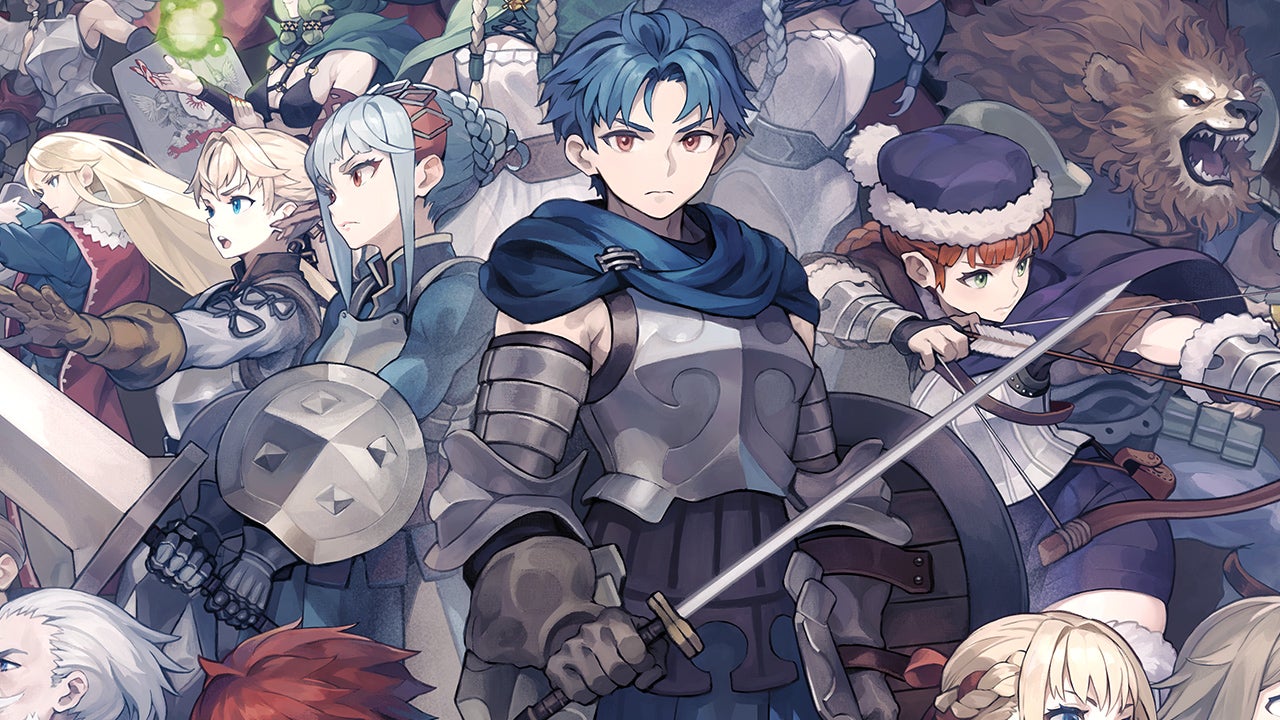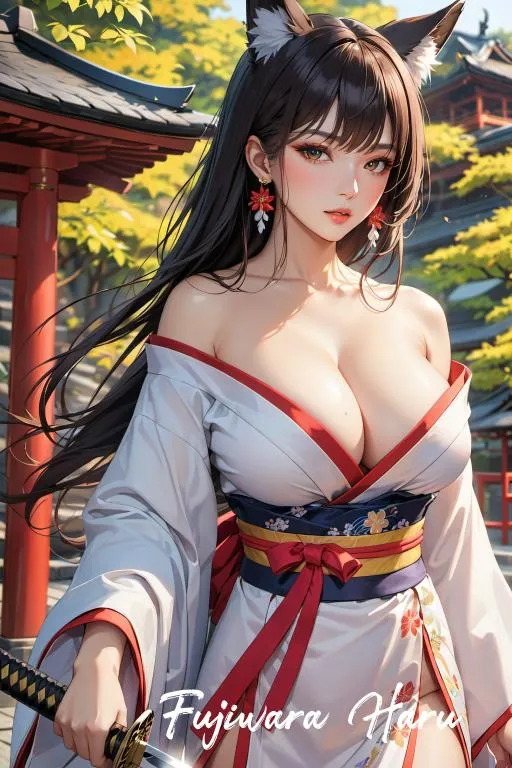It’s rare to find a game that tackles the high-fantasy RPG genre in a completely refreshing way, but that’s how Unicorn Overlord’s character-focused approach feels. Rather than lengthy exposition or 30-minute lore dumps, its wonderfully realized world is gradually fleshed out by the people you interact with, providing interesting perspectives as you learn the stories of both your allies and your enemies. Its overarching plot may be rather simple as a result, sticking closely to genre tropes, but when paired with a beautiful presentation, even familiar stories manage to feel fresh. Support that with excellent strategic combat and compelling resource gathering as you strive to otherthrow an evil empire through the power of friendship, and Unicorn Overlord stands out as one of the most impressive strategy RPGs I’ve played in years.
Stop me if you’ve heard this one before: you’re a young prince named Alain, and you're smuggled out of your kingdom just as the queen makes her final stand against the invading forces – one time skip later and you’re finally old enough to start building a rebel army to take back your birthright, but magic is being used to corrupt the minds of former allies, and a mystical voice sends you on an adventure to help those neighboring kingdoms. While certainly not original, Unicorn Overlord’s strength lies in how its campaign is presented. Stories are told in five-to-ten-minute vignettes that showcase how potential allies are surviving under the rule of the conquering king, and it’s up to you to liberate the five kingdoms and the people that make up the nation of Fevrith. Meanwhile, side stories are where you meet and learn about your allies, showing a small slice of the kingdom up close, while non-story missions and other overworld tasks will send you into short battles, on fetch quests, or to visit landmarks in pursuit of some larger reward, like investigating mysterious carvings to receive legendary weapons.
The central campaign is divided into five 10-hour arcs (though they can take less time if you don’t stop to hit all the side quests along the way) with each isolated to one of the five kingdoms of Fevrith. There is an optimal route to follow for your liberation efforts, but you are free to jump around the map and take on fights above your level, which means you can explore wherever you wish within the open world. You can even take on the final fight within the first hour of the story, but it does come with a hefty warning that you'll almost certainly end up on the wrong end of an ax. (That said, I am looking forward to watching speed runs where people inevitably take down the final boss with a level five army.)
There are certainly some quality differences between the five main questlines, with Bastorias, the land of the beasts, and Elheim, an Elven Kingdom, standing out compared to the other arcs. Bastorias tells a strong story about the meaning of race and the country’s class hierarchy, while Elheim has the best villain (and the best boss fights) in Unicorn Overlord, with an interesting link to your main character that ties into the larger story nicely.
Calling the other primary activities “Side Quests” is a bit of an undersell, as they really are the heart of this story and provide the best moments in your crusade. One powerful highlight has you supporting your cousin in the desert kingdom of Drakenhold, who starts hellbent on avenging her personal guard by finding the general who slaughtered them, only to eventually realize the reckless cost of becoming obsessed with revenge. The quantity and variety of these side tales is impressive, putting you in some tough situations that stretch across the moral spectrum as a lot of your potential allies are operating in a gray area prior to joining your fight. While that does mean most stories boil down to “good people doing bad things,” the balance of good and evil is what keeps things interesting.
Judge, Jury, and Executioner
You’ll become the arbiter of fate for many of the characters you meet, as you are often asked to determine if a potential ally should be welcomed into your ranks, or if imprisoning them, executing them, or simply leaving them to continue on their path is the correct choice instead. Great examples of this include having to decide what to do with Melisandre, a former noble who chose to become an enemy captain in order to keep her bloodline alive after the rest of her house was murdered, or Tatiana, a doctor experimenting on live plague victims to find a cure. Moral questions like these are how you determine if roughly half of your allies will join you or not, with a quarter coming from the main story and another quarter joining automatically after finishing their side quests.
It’s neat to have this much influence, but moral alignment can be mapped to the geography a bit too much, like Elfheim being loaded with purely good guys that join automatically. While this decision makes sense within the story, it effectively strips out that choice mechanic for chunks of the campaign. With most of the cast being somewhat optional, there is a minor level of dynamic storytelling at play as optional characters appear in important cutscenes, but it’s never overly impactful since side characters are often excluded from plot points that would directly relate to them. Reusing my example from above, you eventually meet a character who has decided to survive the plague by enforcing martial law, but Tatiana was nowhere to be found during these later events. Instead, interactions between these two characters was relegated to bond conversations, which pop up as your troops fight and spend time together.
Bond conversations are a very mixed bag, and there are around 1,000 of them to unlock by my estimation. These conversations largely cover any of the interactions between characters that seem like they are missing from the main quests, but for every great back and forth there’s another that feels like filler. It’s an issue of quantity over quality, as these conversations take place entirely in the overworld and have no voice acting. I would have preferred to have fewer total conversations if it meant they had a better production quality.
However, the relationships you foster do lead to the “rite of the covenant,” which acts as Unicorn Overlord’s marriage mechanic. I am happy to report that you can offer this bond to any man, woman, or “bestral” in your army. This does strangely include your adoptive father, which thankfully is not romantically charged like most other options, but you can make the stereotypical royal decision by offering the bond to your cousin! My choice ended up being a relatively minor side character, Amalia, and it was fun to see how she was then integrated into the larger story. With such a strong emphasis on building relationships, it’s unfortunate that you are not given the option to make your main protagonist a woman – Alain is essentially a blank slate for you to experience the world through, so there is no story reason why a princess “Alaina” or something couldn’t have been included.
A Visual Feast
Developer Vanillaware’s signature 2.5D style shines once again across all of Unicorn Overlord’s beautifully animated characters, which resemble paper crafts that almost float through their lovely storybook backgrounds. This look particularly stands out during each visit to the tavern, a place where you can boost bonds outside of battle through a minigame that’s an early contender for most satisfying mechanic of 2024: press X to eat, with each button press slowly chipping away at a spread of detailed and colorful foods – from pizza and seafood paella to strawberry shortcakes, all paired with a variety of sides, the effect is genuinely mouthwatering.
While most cutscenes use this impressive style, the overworld and battlefields instead reminded me of some of my favorite board games like Risk or Gloomhaven. It’s not quite as striking of a style, but this new look quickly grew on me. The open world extends across the entire continent of Fevrith, which includes the usual fare like elven woods, snowy mountain ranges, and desert kingdoms, with towns, forts, and other points of interest marked by tabletop-inspired standees. Rather than teleporting you to a new arena for each battle, the overworld itself is used as the actual level, with landmarks becoming garrisons to conquer and additional obstacles like barricades and archery towers getting dropped in.
Unicorn Overlord’s creative cast is hugely diverse, full of humans, elves, angels, and even werelions. All the characters are wonderfully realized and ooze personality – be that a moody elf who is doted on by his companions despite his folk hero status, or an old man who would gladly trade in his warhammer to pursue his real passions: architecture and drinking. They have loads of visual flourishes and small touches that add tremendously to the overall experience, like how the sorceress will cockily perch on a summoned throne of bats in her victory pose. Those stylish flairs aren’t limited to your units, either, as NPCs add to the lived in feel of this vibrant world, with things like shopkeepers changing depending on the country you’re in (a special shoutout to the provisioner of Bastorias who is just a bunny that greets you by standing atop the counter).
That care extends to Unicorn Overlord’s sounds as well, with conversations that satisfyingly echo in places like churches, while characters in full armor have a metallic ring to their voice due to the metal bucket on their head. In almost all cases characters are well-acted, with voices that match their appearance and social standing perfectly, to the point where the few instances a line of dialogue falls flat really stand out. The music matches the high fantasy vibe in just the right way, too, and I liked that tracks change with both the time of day and the country you are in. The kingdom of Albion’s music is my personal favorite, following a hymn-like melody to reflect its religious nature as the home of the angels. While most songs don’t necessarily stand out, the constant change kept the music from growing monotonous – and in a bittersweet twist, the best song actually plays during the credits, providing a strong final impression to mark the end of a journey in a world I loved exploring.
Squad Up
While my love for Vanillaware’s past games like 13 Sentinels: Aegis Rim had me expecting a well-written story with breathtaking visuals, what I didn’t expect to find was one of my favorite strategy RPG combat systems ever. This system blends genres, primarily combining real-time strategy and turn-based RPG mechanics that have you grouping units together to form squads. You control your squads by plotting their course across a map, with the ability to pause the action at any time and direct them to a new location or target. Battles occur when a squad collides with an enemy, but the results of those fights are generated automatically, meaning you are not choosing individual spells or actions. An optional cutscene then shows how the battle played out, illustrating why you won or lost and if you could be making better use of your units.
While the results are partially based on the strength of your units and their equipment, their abilities and the trigger conditions you assign to them are also critical. Conditions dictate how an ability is used and when they will be automatically activated – for example, if you have an archer with no conditions attached to their shot ability, they will default to attacking the unit directly in front of them… but that often means they are hitting a heavily armored frontline unit, resulting in low damage. Instead, you can attach conditions that pick specific targets based on a bunch of different factors, like prioritizing flying enemies or squishy units hidden in the back row.
Abilities fall into two categories: Active skills, which are your main attacks, buffs, or spells, and passive skills, which include guards, counters, dodges, and more. This system encourages creativity with your squad positioning, as certain abilities are more likely to be used based on where a unit is located. It even allows for unconventional choices, like putting a knight in the back row with a thief in front; passive skills can guarantee dodges (they can’t hurt you if they can’t hit you), freeing the knight up to focus on offensive abilities rather than tanking damage. The default ability logic is good enough to get you through most battles on the “Tactical” difficulty (which is one above “Normal”), with slight optimization needed for some of the harder challenges. But bump things up to “Expert” and you’ll need to engage with these systems to succeed, as otherwise attacks that burn multiple action points will be prioritized even in situations that don’t warrant it, leaving behind a ton of damage potential. There is even a coliseum with an online mode where you can post your squad and their setup for other people to challenge, which is a great way to fully explore the depth of this combat system.
The sheer number of different unit types and classes available to you is a major strength of Unicorn Overlord, but it can become tedious while managing your army. When fully maxed, you can have 10 different squads with five units each, meaning you might have to keep track of up to 50 possible units, with an additional few left on the bench. The class diversity is staggering on its own, from the genre staples like archers and fighters to the more exotic options like the elven fencer or werelions, and the strategic possibilities become even more vast when you combine different types into a squad. It was fun to tinker with different combos, like creating fully mounted squads that could quickly dash across the map, capturing objectives before the enemy could react, or favoring more balanced groups that can fight their way out of a sticky situation. Managing all of that can quickly get overwhelming, but Vanillaware has created a solution: an optimize button for equipment and abilities. That shortcut may be enough for easier fights, but it does make some questionable decisions, like giving a cleric an item that boosts physical attack damage – that would all be well and good if the cleric actually had any attacks.
For most battles the objective is simple enough: defeat the enemy captain and capture their garrison. Fortunately, missions usually have some side objective or unique mechanic that keeps everything fresh. Remember our daring cousin? Well in that level she charges the enemy in a fit of rage, forcing you to rush to stop her while also working with reduced manpower as she takes a full squad with her. Because battles occur in the overworld, they are heavily influenced by the terrain around each encounter. This results in incredibly varied maps with a wild sense of scale as warzones span huge chunks of the countryside. City battles, on the other hand, are fought way differently than ones in the mountains or forests, which leads to the best part of Unicorn Overlord: the gimmicks in its special, one-off maps are the best I’ve ever seen in the genre. I don’t want to spoil any of the best ones, but a relatively basic example is a mission with a cycling sandstorm severely limiting visibility while you maneuver between two separate factions, forcing you to fight a war on multiple fronts while not being able to see where either enemy is coming from.
As a rebel force, you're also expected to be the aggressor, and Unicorn Overlord supports this setup with some unique mechanics that address common problems in other similar games. For starters, every fight has a time limit that, while not overbearing, doesn’t let you win by turtling until you clear the majority of the map and have a free lane to the boss. In another wrinkle, trying to bulldoze through with one or two overpowered squads isn’t viable thanks to a stamina mechanic that, once depleted, won’t allow your unit to move until they either rest or you use an item or “valor ability" to restore it.
Valor abilities range from healing and stamina regen to attacks that specialize in clearing hazards like barricades and traps, but they are balanced by costing valor points that recharge as you defeat enemies and capture their forts and towns, which are also spent to deploy squads. Good positioning is rewarded, as you can swap to any squad within a small radius of a given battle, so don’t be afraid to send out some of your weaker units to train them – especially since there is no permadeath. Unicorn Overlord even handles the fear of a “game over” well, offering a rare consumable item that averts the fail state by giving you more time or allowing you to defend your stronghold if it’s captured. I really liked this, as it was just one decision to burn the item or not, rather than the more common “turn-back time” mechanic that would trap me in a cycle of micro-managing all of my mistakes away.
Victory grants three main currencies: gold, honor, and renown. Gold is self-explanatory, allowing you to buy equipment and items between missions. Honor can be used to promote your units, as well as expand the number of units that can be in a squad and the total number of squads you have available. Finally, renown is a cumulative total that can’t be lost or spent, and dictates what you can spend your honor on (for example, reaching renown level B is what lets you promote units). All three currencies can be earned outside of battle as well by gathering resources and delivering them to cities and towns to help them rebuild, which makes for a really great loop. It encourages you to explore to find resources and other secrets, which then helps you scout out the next battlefield, before the battle itself unlocks more towns to deliver resources to and opens up more of the map. By passively engaging with the delivery system, I always felt like I had more than enough to get the upgrades I needed.








